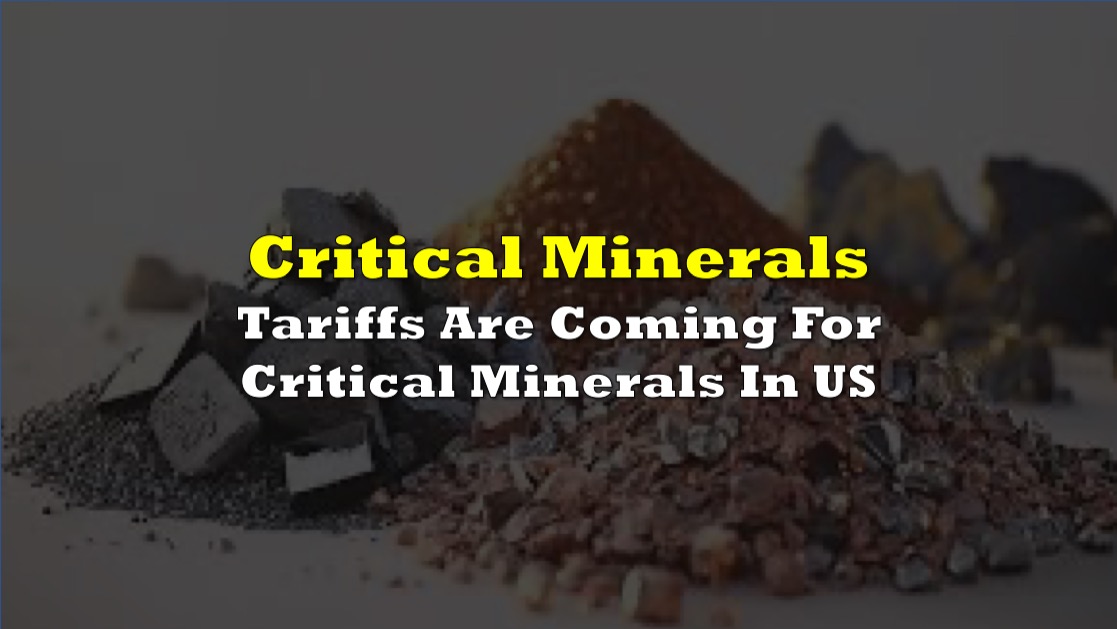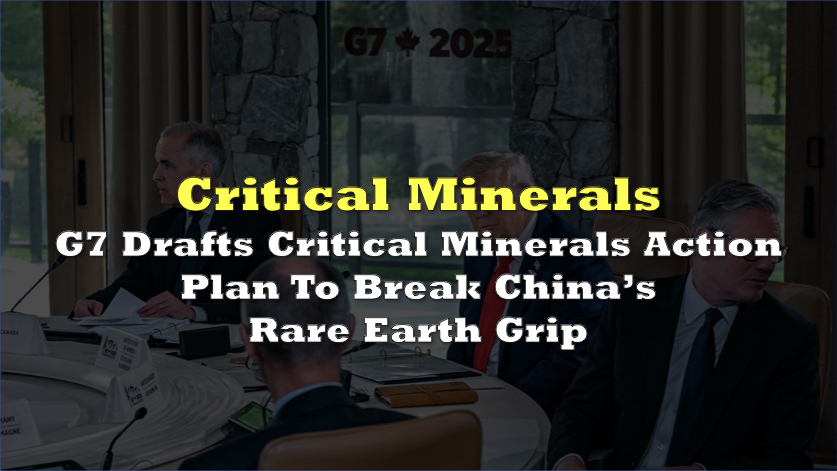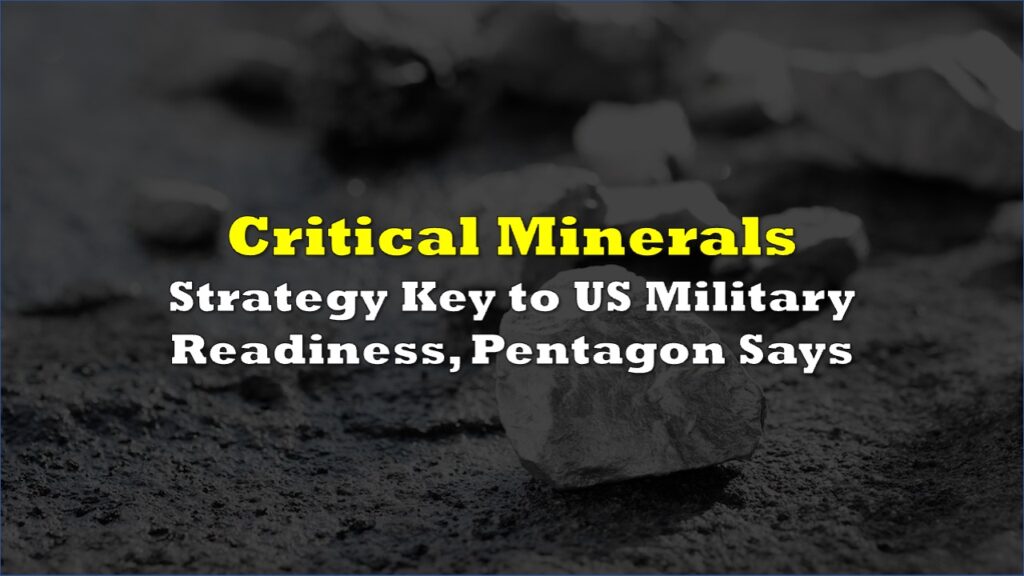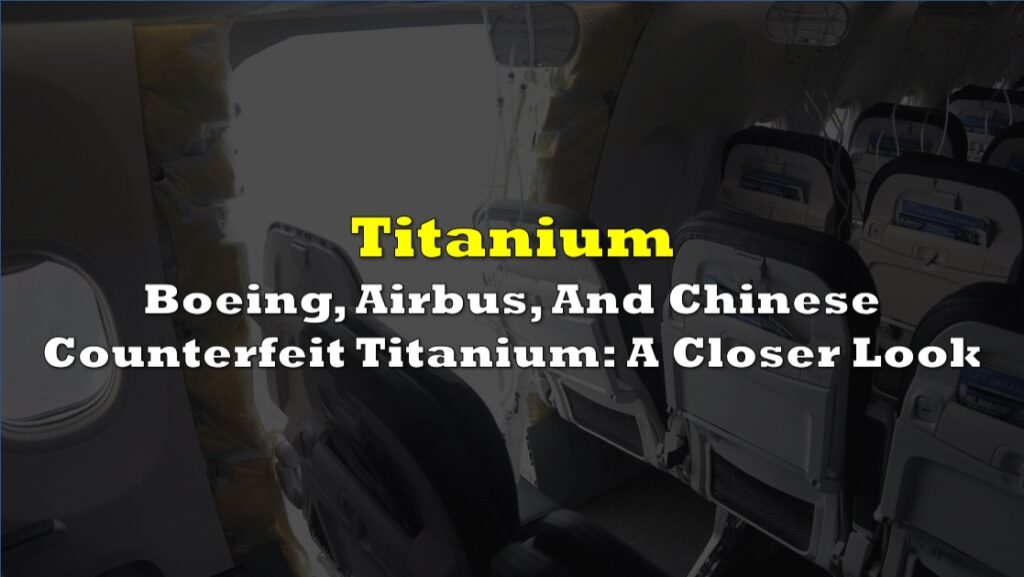US President Joe Biden recently unveiled a series of measures directed for an increase in tariffs on $18 billion worth of imports from China. This directive, made under Section 301 of the Trade Act of 1974, is aimed “to protect American workers and businesses” from the adverse effects of “China’s unfair trade practices,” including technology transfer and intellectual property violations, as well as market flooding with artificially low-priced exports.
As part of this initiative, tariffs on critical minerals and components vital for the electric vehicle (EV) industry and clean energy sectors will see substantial hikes. Beginning in 2024, the tariff rate on lithium-ion EV batteries and battery parts will rise from 7.5% to 25%. By 2026, tariffs on lithium-ion non-EV batteries and natural graphite will also increase to 25%. Additionally, certain other critical minerals will face a tariff increase from zero to 25% starting in 2024.
These measures align with Biden’s broader economic strategy, encapsulated in the Investing in America agenda, which the White House has already boasted to have spurred “more than $860 billion in business investments” across future-focused industries such as EVs, clean energy, and semiconductors. This agenda is further supported by legislative frameworks like the Bipartisan Infrastructure Law, CHIPS and Science Act, and Inflation Reduction Act.
Currently, China dominates over 80% of specific segments in the EV battery supply chain, especially in critical minerals mining, processing, and refining. This concentration poses significant risks to U.S. supply chain resilience and national security, prompting the Biden administration to invest nearly $20 billion in grants and loans to expand domestic production capacity for advanced batteries and battery materials. The Inflation Reduction Act also offers tax credits to stimulate investments in U.S.-based battery production.
In connection, Biden has launched the American Battery Materials Initiative to secure a reliable supply chain for batteries and their components, employing a comprehensive governmental approach to build domestic industrial strength.
Some observers note that this law could further exacerbate the inflation situation. “Not only are we killing fossil fuel investment. But we’re making the green energy transition even more expensive,” said industry observer Brandon Beylo on X, adding to highlight that “the US doesn’t have domestic infrastructure to pick up the slack.”
These tariffs will drive inflation MUCH higher.
— Brandon Beylo (@marketplunger1) May 14, 2024
Not only are we killing fossil fuel investment.
But we’re making the Green Energy Transition even MORE expensive.
Not to mention the US doesn’t have domestic infrastructure to pick up the slack.
Bullish critical metals. https://t.co/qTj7azBEQY pic.twitter.com/sCRZxXKYGE
In terms of readiness to self-sufficiency on critical minerals, Amos Hochstein, White House senior adviser for energy and investment, emphasized the importance of mining projects in countries where Western corporations are hesitant to do business, like the United States.
Hochstein said that these projects are crucial for securing a reliable and sustainable global supply of critical minerals needed for combating climate change and supporting the growth of artificial intelligence.
“We can all live in the capitals and cities around the world and say ‘I don’t want to do business there.’ But what you are really saying is we’re not going to have an energy transition,” Hochstein said. “Because the energy transition is not going to happen if it can only be produced where I live, under my standards.”
This also follows the Senate passing a $95 billion aid package aimed at boosting domestic uranium production and critical mineral procurement. Around $2.72 billion of this package is allocated for enriching domestically-produced uranium, including both Low Enriched Uranium (LEU) and High Assay Low Enriched Uranium (HALEU) for nuclear fuel.
This funding is expected to revitalize U.S. uranium mining, conversion, and enrichment, reducing reliance on foreign imports.
Chinese tariffs
The package also includes tariffs on certain steel and aluminum products, increasing them from 0-7.5% to 25% in 2024. Meanwhile, tariffs on semiconductors will increase from 25% to 50% by 2025.
China’s policies in the legacy semiconductor sector have led to market share growth and rapid capacity expansion, risking the displacement of investment by market-driven firms. To counteract this, the Biden administration is making a nearly $53 billion investment in American semiconductor manufacturing through the CHIPS and Science Act. This includes $39 billion in incentives to build and expand semiconductor manufacturing facilities and a 25% investment tax credit for semiconductor companies.
The tariff rate on electric vehicles will rise dramatically from 25% to 100% in 2024. This measure aims to protect American manufacturers from China’s non-market practices and overcapacity in the EV sector, adding that “the increase in the tariff rate on electric vehicles will protect these investments and jobs from unfairly priced Chinese imports.”
Tariffs on solar cells, whether assembled into modules or not, will increase from 25% to 50% in 2024. This tariff hike seeks to protect against China’s policy-driven overcapacity, which has depressed prices and inhibited solar capacity development outside China. The Biden administration has invested significantly in the U.S. solar supply chain, with nearly $17 billion in planned investment in solar manufacturing under the Inflation Reduction Act.
Ship-to-shore cranes will see its tariffs increase from 0% to 25% in 2024. This measure is part of a broader effort to rebuild U.S. industrial capacity and secure the supply chains essential for port operations. “This port security initiative includes bringing port crane manufacturing capabilities back to the United States to support U.S. supply chain security,” said the White House memo.
Tariff rates on syringes and needles will rise from 0% to 50% in 2024, while tariffs on certain PPE, including respirators and face masks, will increase from 0-7.5% to 25%. Tariffs on rubber medical and surgical gloves will increase from 7.5% to 25% by 2026.
“When faced with anticompetitive, unfair practices from abroad, the President will deploy any and all tools necessary to protect American workers and industry,” the White House asserted.
Information for this story was found via the sources mentioned. The author has no securities or affiliations related to the organizations discussed. Not a recommendation to buy or sell. Always do additional research and consult a professional before purchasing a security. The author holds no licenses.









